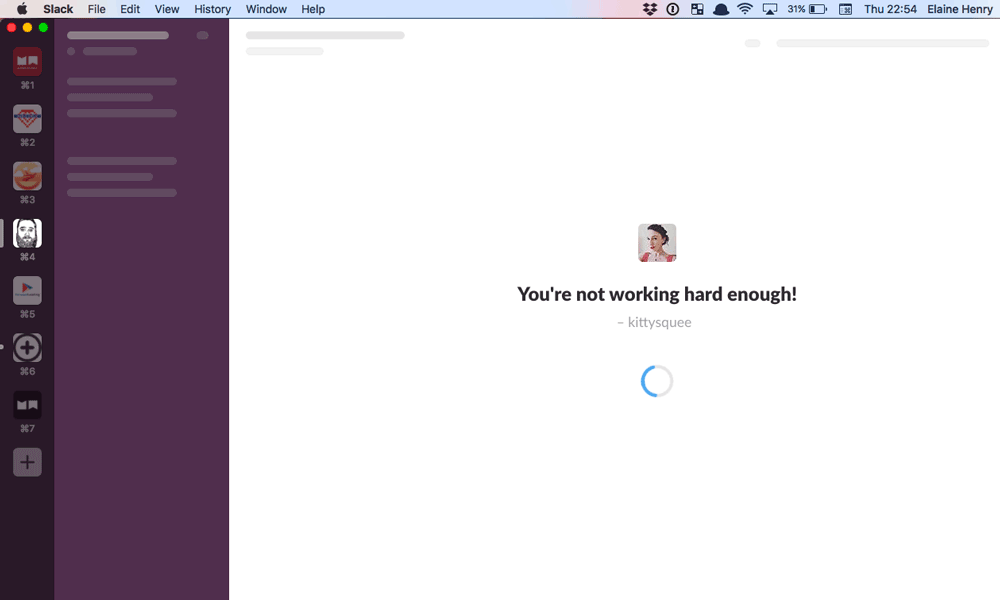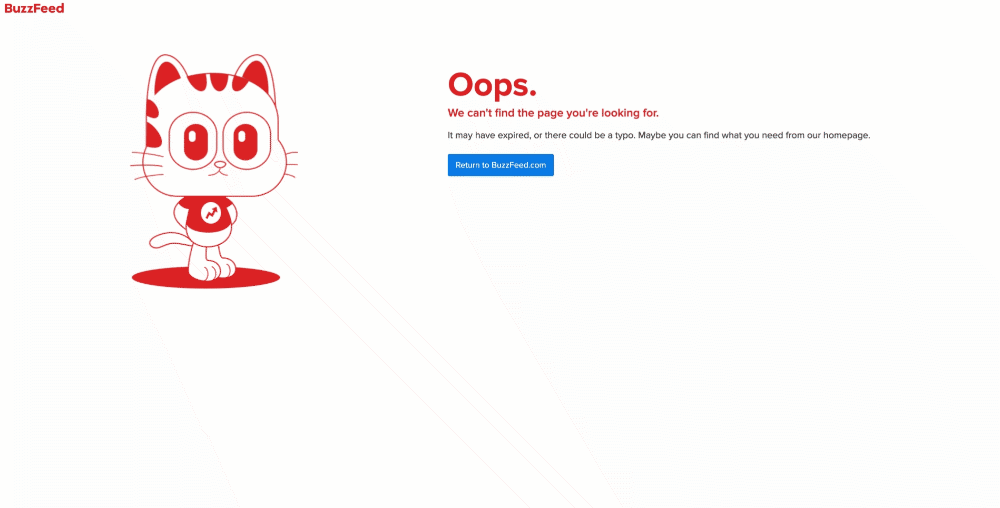Understanding UX Writing – An In-Depth Guide
User experience (UX) writing is the art and science of crafting the words that appear throughout digital interfaces and products in a way that improves the overall experience for users. From crafting button text to writing helpful notifications, UX writing impacts how easy software and websites are to understand and use.
In this comprehensive guide, we'll explore all aspects of UX writing. By the end, you'll fully grasp what this field entails and how to produce effective UX copy. Let's dive in!
Table of Contents
Defining UX Writing

The term “UX writing” emerged in recent years to describe the specialised skill of crafting copy and microcopy for digital products like apps, websites, and software. UX writers are focused on making these experiences intuitive, engaging, and enjoyable for users.
But what exactly does that entail? Every word you read when interacting with a digital interface – from button labels to error messages to instructions and beyond – must be written by someone with a user-centred mindset. UX writers employ tools like simplicity, clarity, empathy, and strategic messaging to create compelling content that supports the overall user experience.
At its core, UX writing involves strategically using words and language to prompt our ideal user responses, whether downloading an app, purchasing a subscription, or completing a critical task.
Why UX Writing Matters
Some may wonder whether UX writing makes much of a difference. Can't developers just label buttons themselves?
The data on UX writing would suggest otherwise. Having an excellent UX writing strategy has been shown to boost key product metrics like engagement, conversions, and retention. Here are some specific ways that great UX writing benefits products:
- Drives Actionable User Behaviour: UX writing prompts users' desired behaviours and actions, whether signing up for a trial or adding an item to their shopping cart. You strategically guide users to take specific paths.
- Boosts Task Completion: By presenting clear, concise information to users as needed, UX writing significantly improves task completion and reduces user errors—less confusion = more completed tasks.
- Increases Usability: Thoughtfully crafted UX copy makes interfaces much easier to parse and understand for users, improving the overall usability and experience.
- Improves Brand Perception: When users encounter practical instructions, friendly language, and helpful guidance throughout an interface, their perception of that brand is boosted. They see it as more warm, approachable, and trustworthy.
- Reduces Support Tickets: Interfaces with ambiguous language or confusing flows result in more users contacting customer support teams with questions. Strong UX writing proactively provides the proper guidance to users to avoid this.
The implications are clear: UX writing should be a top priority for companies that depend on digital engagement. And great UX writers can provide an outstanding return on investment.
UX Writing Best Practices

Now that we’ve covered the importance of UX writing, what are some best practices for creating compelling content? Here are seven critical areas for UX writers to focus on.
Adopt A User-Centred Mindset
The core foundation of UX writing is developing empathy for users and seeing interfaces through their eyes. Before writing any copy, ask questions like: What is the user trying to achieve at this step? What questions or concerns might they have? What tone would build trust?
Adopting a user-first mindset will yield copy that guides and reassures at every touchpoint.
Use Familiar, Conversational Language
Aim for casual, friendly writing that mirrors how users speak. Employ language that feels warm and human rather than overly salesy or corporate. Use contractions, personal pronouns like “you”, “we”, or “us”, and words users already know. This builds credibility and rapport.
Favour Short Sentences & Easy Reading Levels
Keep sentences under 15-20 words whenever possible while aiming for a 7th-8th grade reading level. Reducing the cognitive load through simplicity and brevity allows users to process writing seamlessly without getting overwhelmed or distracted.
Localise Content For Target Users
Tailor writing to cultural norms, terminology, units of measurement, dialects, and currencies for intended user locations. Failing to localise UX copy for each target market leaves users confused or unable to relate to the content.
Use Active Voice For Clarity
Unlike the ambiguous passive voice, the active voice indicates who’s doing what. For example, “You will get an email” is passive, while “We will send you an email” is active. Active voice enhances understanding by being direct and specific about actions.
Write Positive Instructions
Phrase instructions by what users should do rather than what they shouldn’t do. Research shows that positive imperatives dramatically boost compliance more than the prohibitive language of “don’ts” or “can’ts”.
Employ Strategic Messaging Techniques
Leverage messaging strategies like social proof, urgency triggers, reciprocity, and scarcity to produce desired user responses. However, ensure these techniques match the brand voice and are used judiciously to avoid over-optimisation.
By keeping these best practices in mind while writing, UX writers create content optimised for usability and conversion at every step.
Core Components of UX Writing

From buttons to tooltips to emails, many types of UX copy work together to shape the overall user experience:
Let’s explore some of the most essential UX writing components:
Action-Driven Buttons & Links
Calls-to-action encourage user actions, so phrasing is crucial. Well-written CTAs indicate the activity that will occur if clicked, using trigger words users respond to. Concise, benefit-driven language works best.
Scannable Content
Leverage formatting like headlines, subheads, lists, and highlight text to create easily scannable content since users don’t read word-for-word. Scannable writing allows users to extract critical information rapidly.
Task-Based Instructions
When providing instructions, focus copy specifically on user goals to offer relevant guidance at each step. Task-based writing cuts through any fluff to direct users, improving task completion rates.
Informative Tooltips
Tooltips enhance usability by temporarily appearing to define interface elements or provide concise help. Well-written hover tooltips deliver just-in-time assistance to users without being distracting or confusing.
Confirmation Messages
Let users know their action was successfully received with a confirmation message. These should reassure users while being compact enough not to disrupt workflow.
Friendly Error Messages
No one enjoys error messages, but UX writers can make them more user-friendly. Tactful, supportive copy clarifies the issue and guides recovery, reducing frustration.
Personalised Emails
Email copy has additional UX writing considerations, like compelling but non-spammy subject lines and segmentation. Personalised email body copy performs best by speaking directly to users’ needs or interests.
Producing UX Copy For Scale

A product manager or engineer may handle UX writing at small startups. But for mid-size and enterprise products, the volume of UX copy required calls for dedicated UX content teams.
When producing UX copy at scale across a complex product, UX writers employ various frameworks and tools:
UI Copy Standards
Documented guidelines around tone, voice, word choices, and patterns enable consistency across interfaces and teams. Shared standards aligned on “brand speak” are essential with multiple writers.
UX Copy Tools
Dedicated UX writing tools like Idyll, Compose, or Slite help collaborate on editing interface copy and track version histories. They also enable isolation for localisation.
UI Copy Libraries
Centralised repositories of approved UX microcopy make it easy for engineers building interfaces to grab needed elements like error messages. This promotes alignment.
Voice & Tone Guidelines
While copy standards govern wording and style, voice and tone instructions guide the brand personality. Do writers take an informative, upbeat, or witty manner? Defining this upfront is critical.
With the right frameworks, tools, and guidelines, UX teams can maintain cohesion at scale.
UX Writing Process Steps
How should UX writers approach producing all this optimised copy? Here is an overview of the end-to-end workflow:
Plan Content Strategy
Audit existing content and align on goals, KPIs, messaging, and taxonomy structures guiding writing.
Conduct User Research
To uncover needs and pain points, get into the user mindset through surveys, interviews, personas development, and journey mapping.
Map User Flows
Outline detailed user pathways and touchpoints through interfaces to inventory copy requirements.
Produce Initial Drafts
Write initial copy drafts for emails, tooltips, and guides using agreed standards and guidelines.
Cross-Team Collaboration
Collect feedback on drafts from designers, engineers, product managers, and other stakeholders to enhance content.
Refine Through Testing
Confirm copy effectiveness through qualitative and quantitative testing, refining based on insights.
Localise & Publish
Adapt the finalised copy for localisation requirements before publishing broadly through the product experience.
This comprehensive approach results in UX copy tailored to user needs and aligned across the entire stack, delighting users.
UX Writer Skills & Competencies

Now that we’ve covered what UX writing involves and how to produce it, what skills should strong UX writers possess? There is a diverse range needed:
User Psychology: Know what makes users tick. Apply user psychology frameworks to writing.
Interface Design: Understand interface layout, patterns and components that impact UX text treatment.
Strong Writing Skills: Core writing chops, from grammar to editing, are mandatory for UX scribes.
Creativity: Inject engaging yet appropriate humour, metaphors, and wordplay – with a vision for how UX copy can delight.
Data Analysis: Leverage data skills to optimise and test content, tracking key metrics response.
Collaboration: Cooperate cross-functionally across product, design and engineering to inform and align.
Project Management: Coordinate many inputs and stakeholders under tight timelines to deliver.
Localisation Expertise: Recognise how to adapt the text for languages, cultures and global markets.
This combination of strategic, creative and analytical strengths empowers UX authors to craft game-changing experiences through words.
Examples of Effective UX Writing
To better envision excellent UX writing in action, let’s look at a few real-world examples:
Slack’s Empty State Screens
Slack elegantly welcomes new users through friendly copy, including “You're not working hard enough!” and “This is where all your conversations with your teammates will live.” This warm, supportive tone offers the exact guidance needed while setting expectations.

Buzzfeed’s 404 Page
Buzzfeed adds humour instead of a dull “Page Not Found” with “Oops.” and cute illustrations. The witty copy matched to branding delights users.

Dropbox Upload Confirmations
After uploads, Dropbox reassures simply: “Finished Uploading! Your files have finished uploading to Dropbox.” The focused confirmation gives a precise status update without distraction.

Stripe’s Email Error Messages
Payment platform Stripe sends error emails starting with “Sorry about that!” to diffuse frustration. Specific guiding copy like “To resolve, head to Payments > Billing and update your credit card” tactfully helps users recover.

These examples demonstrate that a compelling UX copy is about carefully choosing words that set the right tone, guide users, eliminate confusion, and sometimes surprise and delight through creativity. Small touches go a long way in wowing users.
UX Writing Tools & Resources
For UX authors getting started, many helpful tools and resources exist:
Tools
- UI Libraries: Catalog UIs and generate UI copy, like Cornerstone
- Collaborative Editors: Facilitate team copywriting, like Composify
- Testing Software: Assess UX text effectiveness, like UserTesting
- Localisation: Adapt copy for global markets, like Lokalise
- Analytics: Track metrics response to UX changes, like Amplitude
Resources
- Books: Steve Krug’s “Don’t Make Me Think” and Connie Malamed’s “Visual Language for Designers”
- Blogs: Useful articles on UX Movement and Nielsen Norman Group
- Communities: UX Writers Collective on Facebook, UX Content & Copy Slack
- Certifications: Such as the University of California San Diego UX Writing program
- Conferences: UX events like CONTENT 22 and ContentCamp
- Krug, Steve (Author)
- English (Publication Language)
- 216 Pages – 12/24/2013 (Publication Date) – New Riders (Publisher)
Investing in appropriate tools and further education through resources like these will dramatically increase UX writing mastery.
UX Writing Salaries & Job Market
As digital experiences become increasingly essential for all companies, demand and compensation are rising for qualified UX content professionals, according to LinkedIn’s Emerging Jobs report.
Here’s a snapshot of current UX writer salaries and job growth:
- Average UX Writer Salary (US): $126,000
- Average UX Content Strategist Salary (US): $106,000
- YoY Job Growth (Global): +215%
- Typical Experience Required: 2-5 years
- Industries Hiring Most: Tech, Consulting, Finance
With competitive pay and abundant openings across many economic sectors, there’s never been a better time to explore UX writing as an exciting new career direction.
Key Takeaways on UX Writing's Importance
We’ve covered a lot of ground on the growing discipline of UX writing. Let’s recap the key learnings:
At its core, UX writing is the specialised practice of crafting intuitive, engaging copy for digital interfaces using strategy and user-centred design principles.
Skilled UX writers help shape exceptional user experiences across product touchpoints through empathetic content designed to inform, guide, reassure and sometimes delight.
Investing in UX writing expertise pays dividends for companies through increases in conversion rates, engagement, retention, brand trust, and accessibility attained by optimising text for readability and user action.
By following best practices like embracing familiar language, writing succinctly, localising for global audiences and structuring scannable content, UX writers allow users to seamlessly parse experiences.
Dedicated tools and workflows empower UX authors to collaborate with cross-functional product teams at an enterprise scale.
As platforms become more saturated, focusing intently on each micro-moment of language, emotion and friction users encounter can create game-changing bonds and perceptions. Skilled UX writers hold the pen to guide users skillfully from confusion to delight – one perfectly crafted word at a time.
Frequently Asked Questions on UX Writing
Still, have some lingering questions about UX writing and how to excel within this emerging domain. Here are answers to 5 of the most frequently asked questions:
What's the difference between UX writing and other writing forms like marketing copy or technical writing?
UX writing is specialised to be highly user-centric, focusing specifically on crafting microcopy, including button text, tooltips, etc., to create seamless digital experiences via words. It is often more technical than marketing writing but more creative than technical documentation.
Can I transition into a UX writing career from another field, like journalism or teaching?
Absolutely. Many UX writers joined from creative writing fields, and transferable skills like empathy, brevity and clarity are hugely relevant. Complement existing skills with UX methodology training to leap successfully.
Do UX writers need coding skills?
While not mandatory, being aware of HTML/CSS basics can help inform the treatment of interface copy. But the more essential skills are user empathy, writing ability and information architecture – no need to stress about coding expertise.
What should a complete beginner focusing on UX writing learn first?
Before diving into microcopy specifics, start by studying core UX and UI design principles from leading experts to grasp what shapes excellent digital experiences. Combine that lens with brushing up on language skills through books on style, punctuation, brevity, and editing.
What's the #1 most important skill for an aspiring UX content professional?
Cultivating empathy and getting into the user mindset eclipses everything else. The best technical writers or wordsmiths flounder in UX writing without deeply understanding user perspectives, pain points, and psychological triggers behind taking action. Centre their reality when crafting copy above all else.
Hopefully, these UX writing FAQs have shed light on building a thriving career growth path. Best of luck crafting the perfect words to win over customers!
Last update on 2024-05-05 / Affiliate links / Images from Amazon Product Advertising API

